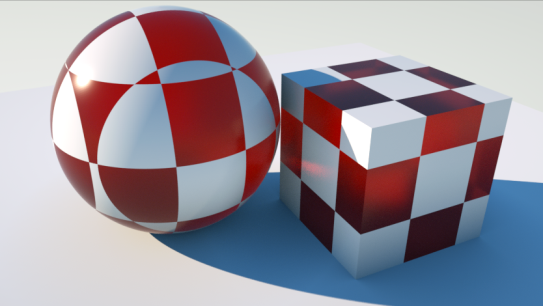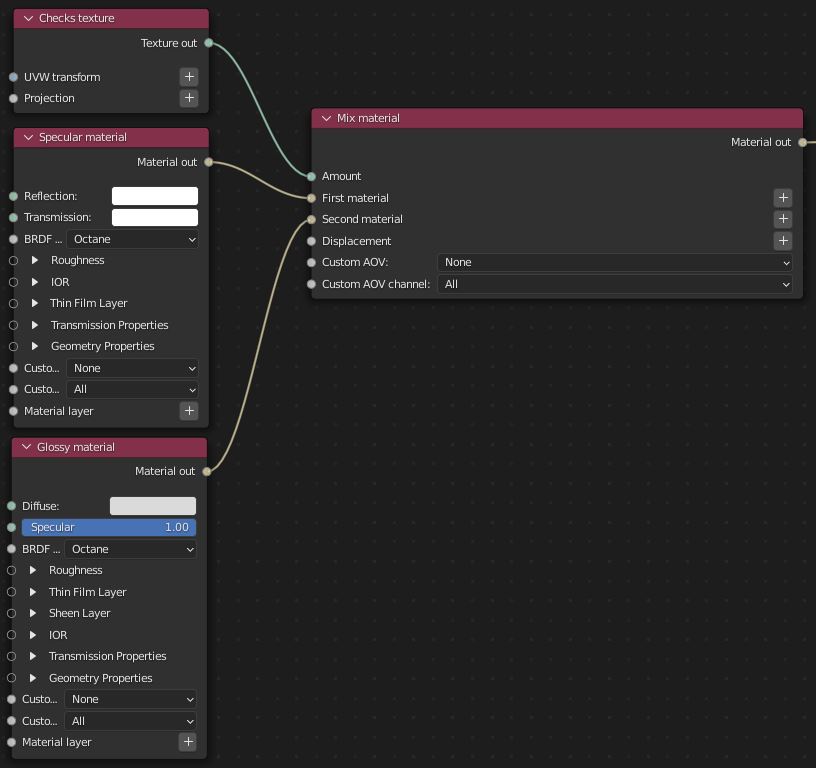
Mix materials combine two different MaterialsA set of attributes or parameters that describe surface characteristics. (Figure 1). It accepts any two MaterialThe representation of the surface or volume properties of an object. nodes, and you control the mix with a Texture node (Figure 2).

Figure 1: GlossyThe measure of how well light is reflected from a surface in the specular direction, the amount and way in which the light is spread around the specular direction, and the change in specular reflection as the specular angle changes. Used for shiny materials such as plastics or metals. and SpecularAmount of specular reflection, or the mirror-like reflection of light photons at the same angle. Used for transparent materials such as glass and water. materials mixed together with a Mix materialUsed to mix any two material types.

Figure 2: A red Specular materialUsed for transparent materials such as glass and water. mixed with a white Glossy materialUsed for shiny materials such as plastics or metals. using a Checks texture as the Mix Amount
The two Materials' individual displacements are not used when you connect them to a Mix material node. Instead, the Mix material has its own DisplacementThe process of utilizing a 2D texture map to generate 3D surface relief. As opposed to bump and normal mapping, Displacement mapping does not only provide the illusion of depth but it effectively displaces the actual geometric position of points over the textured surface. input.

Figure 3: Displacement applied to an Object through the Mix material's Displacement input
Custom AOV - Writes a mask to the specified custom AOV.
Custom AOV Channel - Determines whether the custom AOV is written to a specific color channel (R, G, or B) or to all the color channels.